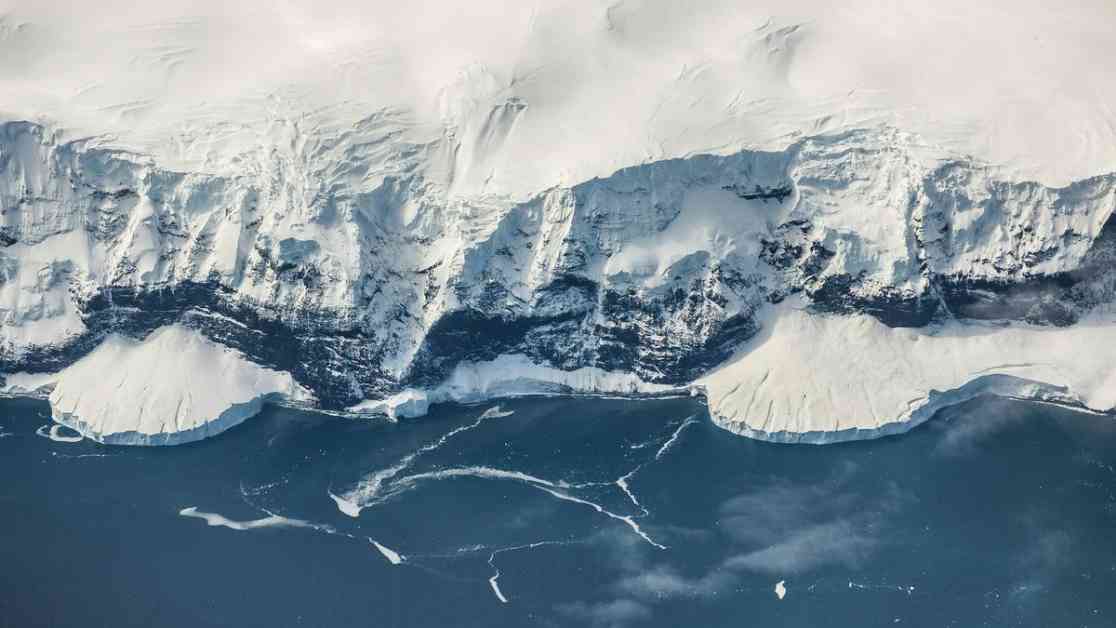Climate Change Causing Polar Ice Melting Leads to Longer Earth Days
The impact of climate change on our planet continues to reveal itself in unexpected ways. Scientists have recently discovered that the melting polar ice caps are causing the Earth to spin slower, resulting in longer days. While this may seem like a minor change, it can have implications for our technology and the way we interact with the world around us.
The Conservation of Angular Momentum
To understand why melting polar ice is affecting the Earth’s rotation, we must delve into the principles of physics. The conservation of angular momentum, a fundamental law of physics, is at the heart of this phenomenon. Just like an ice-skater who can change their spinning speed by adjusting their arm position, the Earth’s rotation is influenced by changes in its mass distribution.
As polar ice sheets and global glaciers melt due to rising temperatures, the water flows towards the equator, causing the Earth’s oblateness to increase. This elongates the region around the equator, leading to a slight bulge and a slower rotation rate. The moment of inertia of the Earth increases as a result of the melting ice, ultimately lengthening the duration of a day.
The Impact on Earth’s Rotation
Climate scientists have used a combination of climate models and real-world data to study the effects of melting polar ice on the Earth’s rotation. Over the last two decades, the changing climate has slowed the rate of the Earth’s rotation by approximately 1.3 milliseconds per century. If high emission scenarios persist, this rate is projected to double to 2.6 milliseconds per century.
This gradual slowing of the Earth’s rotation may seem insignificant, but it highlights the profound impact of climate change on our planet. Duncan Agnews, an emeritus professor of geophysics, emphasizes the significance of this effect, noting that even a small change in the Earth’s rotation rate is a substantial indication of the influence of climate change.
The Implications for Technology
While the lengthening of Earth days may not have a noticeable impact on our daily lives, it can disrupt the precise timekeeping required for technological systems such as computer networks and space travel. Atomic clocks, which have been used since the 1950s for accurate time measurement, rely on the Earth’s rotation to maintain synchronization.
In the world of precise timekeeping, even a difference of a few milliseconds can have significant consequences. The addition of leap seconds to account for variations in the Earth’s rotation is essential for maintaining the accuracy of systems like GPS, stock trading, and space missions. Any disruption to this delicate balance could have far-reaching implications for our interconnected world.
The Role of Lunar Tidal Friction
In addition to the effects of melting ice, the Earth’s rotation is also influenced by lunar tidal friction caused by the gravitational pull of the moon on the Earth’s oceans. This natural phenomenon has been gradually slowing the Earth’s rotation by approximately 2 milliseconds per century. As these changes accumulate over time, adjustments like leap seconds are necessary to align atomic timekeeping with the Earth’s rotation.
As we strive for precision in time measurement, even the smallest deviations in the Earth’s rotation can pose challenges for modern technology. The intricate dance between natural forces like lunar tidal friction and human-induced factors like climate change underscores the complexity of our planet’s dynamics.
The Shifting Earth’s Axis
Recent studies have also shed light on the effects of melting polar ice on the Earth’s axis of rotation. Observations and predictions have shown that the melting ice and glaciers are contributing to changes in the Earth’s polar motion. This gradual shift in the Earth’s axis can have far-reaching implications for our planet’s stability and climate patterns.
As the Earth’s axis undergoes subtle changes due to melting ice, the consequences extend beyond a mere lengthening of days. Rising sea levels, a direct result of melting ice, pose a significant threat to coastal areas and ecosystems worldwide. The interconnected nature of these changes underscores the urgent need to address climate change before it spirals out of control.
Conclusion
The impact of climate change on the Earth’s rotation and axis is a stark reminder of the far-reaching consequences of our actions on the planet. As we witness the melting of polar ice and the resulting changes in the Earth’s dynamics, it becomes clear that we must take decisive action to mitigate the effects of climate change.
From slowing Earth’s rotation to shifting its axis, the repercussions of melting ice extend beyond mere scientific curiosity to real-world consequences. By understanding the intricate interplay between natural forces and human activities, we can work towards a sustainable future for our planet and all its inhabitants.













